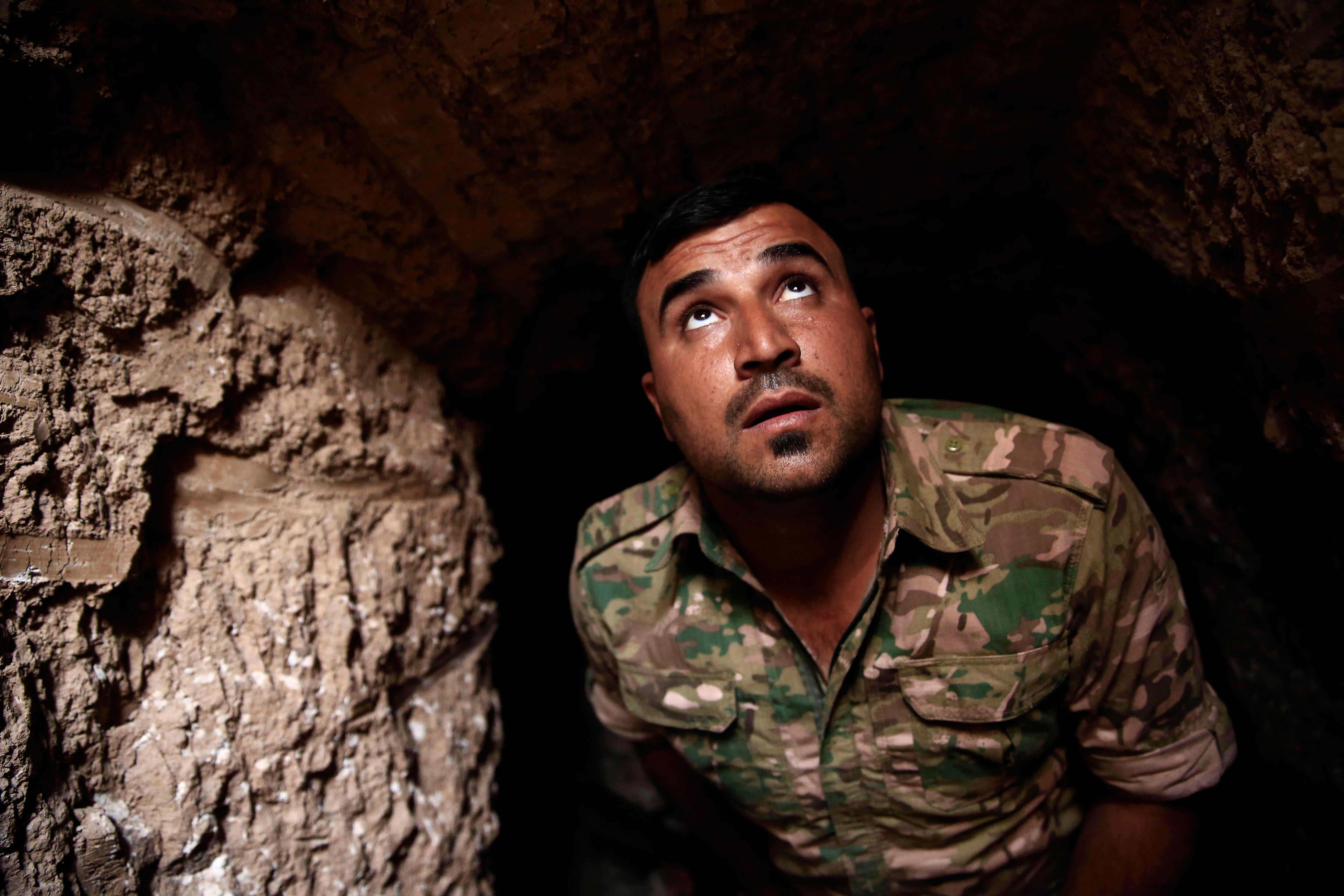When soldiers are exposed to small doses of toxins, their symptoms may be mistaken for common illness. Doctors can miss a key window for delivering early treatment, and military planners may never know that chemical or other hazards were present on the battlefield.
With this in mind, scientists at the U.S. Army Edgewood Chemical Biological Center at Aberdeen Proving Ground, Maryland, are developing a more accurate detector.
“Right now we have samplers, not detectors,” said Bruce King, a research chemist at the center. “Our real-time tools are not very specific. They maybe look at just a class of chemicals, so a pesticide would look just like [nerve agent] VX on current wearable sensor technology.”
To get a more precise reading on environmental contaminants, the scientists are looking to combine wearable chemical samplers with multidimensional chromatography, a sophisticated analytic technique that can distinguish the specific chemical signature of a wide range of substances.
RELATED

The device detects chemical, biological and other hazards in the vapor phase. This means that even if the chemicals are no longer present, the soldier-worn sensor would still be able to gather useful intelligence from the air.
To avoid issues of battery life, the sensor operates in passive mode, gathering samples with no power required. All the heavy lifting is done in the lab, where scientists apply chromatography, sniffing out up to 1,000 separate compounds within a single sample with the aid of high-resolution mass spectrometry techniques.
The military has sought such a capability for some time now. King describes a Marine Corps effort 15 years ago to deploy a passive sampler to some 100,000 Marines. The resulting data proved too much to process.
King’s team, therefore, has narrowed the window. They aim to deploy their device first to CBRN — chemical, biological, radiological and nuclear — teams, which typically operate in 12-person cohorts. This gives the analysts a more manageable volume of data.
Advances in analytic techniques also have helped empower the new technology. Scientists in the food and fragrance industries in particular have been active in the development of new spectrometry technologies, as they seek to refine the ability to produce specific flavors and scents. “We are able to take advantage of all these advances that they have been making for the past 15 years,” King said.
A prototype device is being tested by the National Guard, with developers keeping a keen eye on usability data. “We want it to be so easy that anyone can put this patch on and go about their business,” King said. If all goes well, widespread deployment could happen within a year.
If successful, the effort would not only keep soldiers safer, but would contribute a powerful, new tool to the arsenal of battlefield intel collection.
“We can see what compounds were in that environment,” King said. “Now suppose we had one group of soldiers look at one target and another group of soldiers was at another site. If we see the same compounds in the air in both places, we can start tying that information together. It helps us to go up the chain of bad guys.”
Sweat sensor
In other sensor evolution news, a team at the Air Force Research Laboratory is also working on a wearable patch — one that would analyze sweat, with an eye toward keeping soldiers hydrated.
“Hydration is one way we can understand a person’s susceptibility to heat stress,” materials scientist Jeremy Ward said in an Air Force news release. Ward works on the Advanced Development Team at the AFRL Materials and Manufacturing Directorate and is the government lead for the Nano-Bio Manufacturing Consortium.
“One approach to learning about a person’s hydration status is by monitoring the composition of their sweat,” he noted.
Working in collaboration with industry via the consortium, AFRL scientists are developing a wearable sensor patch that detects the potassium and sodium excreted in sweat. The tech then wirelessly transmits this information to a mobile device or computer. This could give military leaders the ability to monitor soldier hydration in real time.
The 711th Human Performance Wing and U.S. Air Force Academy cadets field-tested the sensor earlier this year.
“This was a great opportunity for us to better understand the environment in which our sweat sensors need to operate reliably,” Ward said. “The data from this test has already shaped our research and development efforts moving forward.”
The team is now looking to develop more reliable sensor materials and robust packaging concepts for the patch.








